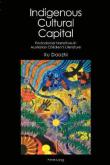 4486209597583293408.jpg
4486209597583293408.jpg
 Indigenous Cultural Capital : Postcolonial Narratives in Australian Children's Literature
multi chapter work
Indigenous Cultural Capital : Postcolonial Narratives in Australian Children's Literature
multi chapter work
 4486209597583293408.jpg
4486209597583293408.jpg
 Indigenous Cultural Capital : Postcolonial Narratives in Australian Children's Literature
multi chapter work
Indigenous Cultural Capital : Postcolonial Narratives in Australian Children's Literature
multi chapter work
'Children's literature enables young readers to acculturate to socially desirable forms of knowledge, values and ideologies. An increasing number of children's books with Aboriginal themes and motifs, written by Indigenous and non-Indigenous writers in the post-Mabo era, seek to rewrite Aboriginal history through realistic or imaginative modes of expression and, as a counter-discursive agency, they open a path to inculcate young minds with Aboriginal culture and knowledge in a postcolonial context. Drawing on Pierre Bourdieu's concept of cultural capital, Indigenous Cultural Capital: Postcolonial Narratives in Post-Mabo Australian Children's Literature explores how Aboriginal people's histories and cultures are deployed, represented, and transmitted as " Indigenous cultural capital " for young readers, with the purpose of illuminating the complex relations between Aboriginal agency and dominant forces in the postcolonial contact zone and identifying possible tactics of resistance within the domination. The notion of Indigenous cultural capital provides a fresh perspective in the postcolonial readings of Australian children's books.' (Publication summary)
Table of Contents:
(Introduction)
(Introduction)